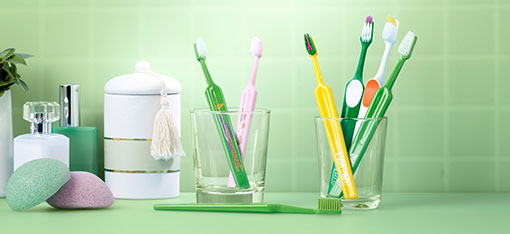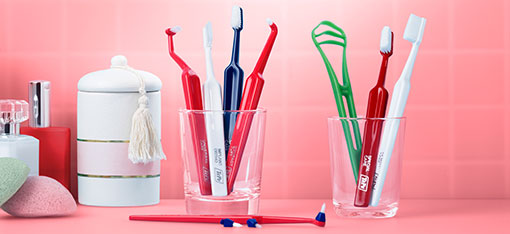Is Teeth Whitening Safe & Effective?
Teeth-whitening - also known as teeth-bleaching - is a common dental treatment. Despite that it is called bleaching, bleach is not used during the procedure. Recommended whitening agents usually contain hydrogen peroxide and are safe to use if current guidelines are followed.

Teeth Discoloration
Teeth discoloration is a natural process that gradually occurs over time. External discoloration affects the outside of the tooth, and internal discoloration comes from the inside. Smoking, coffee and tea can cause external discoloration. It can be managed with good oral hygiene routines but are best removed by a dental professional, using special instruments and polish paste. Internal discoloration is usually a combination of the natural thickening of the dentin (the internal tooth structure), which is yellow in color, and thinning of the enamel through normal wear.
Teeth discoloration is a natural process that gradually occurs over time. External discoloration affects the outside of the tooth, and internal discoloration comes from the inside. Smoking, coffee and tea can cause external discoloration. It can be managed with good oral hygiene routines but are best removed by a dental professional, using special instruments and polish paste. Internal discoloration is usually a combination of the natural thickening of the dentin (the internal tooth structure), which is yellow in color, and thinning of the enamel through normal wear.

Whitening Methods
There are many over-the-counter products that advertise whiter teeth, including whitening toothpaste, mouthwashes, generic tray systems and whitening strips. Many of these contain a low concentration of hydrogen peroxide, and studies show that although these products have a limited whitening result, they can sometimes be effective on external discoloration. Be careful with whitening toothpaste that contains abrasive ingredients, since it can permanently damage the enamel.
 1. In the dental office, the most common treatment is home-whitening. Impressions of your teeth are taken, and customized trays are made - after that, whitening gel is applied in the trays. You wear them either during the day or the night for 2-6 weeks.
1. In the dental office, the most common treatment is home-whitening. Impressions of your teeth are taken, and customized trays are made - after that, whitening gel is applied in the trays. You wear them either during the day or the night for 2-6 weeks.
 2. There is also chairside whitening, where the whitening is carried out in the dental office over one or several sessions.
2. There is also chairside whitening, where the whitening is carried out in the dental office over one or several sessions.
3. The third technique, non-vital whitening, is used on teeth with root canals.
There are many over-the-counter products that advertise whiter teeth, including whitening toothpaste, mouthwashes, generic tray systems and whitening strips. Many of these contain a low concentration of hydrogen peroxide, and studies show that although these products have a limited whitening result, they can sometimes be effective on external discoloration. Be careful with whitening toothpaste that contains abrasive ingredients, since it can permanently damage the enamel.
 1. In the dental office, the most common treatment is home-whitening. Impressions of your teeth are taken, and customized trays are made - after that, whitening gel is applied in the trays. You wear them either during the day or the night for 2-6 weeks.
1. In the dental office, the most common treatment is home-whitening. Impressions of your teeth are taken, and customized trays are made - after that, whitening gel is applied in the trays. You wear them either during the day or the night for 2-6 weeks.  2. There is also chairside whitening, where the whitening is carried out in the dental office over one or several sessions.
2. There is also chairside whitening, where the whitening is carried out in the dental office over one or several sessions. 3. The third technique, non-vital whitening, is used on teeth with root canals.
These three treatments generally use hydrogen peroxide gel as a base. The dental professional decides which treatment is suitable depending on individual preferences and why the teeth are discolored.
Common Side-Effects of Whitening
A high concentration of hydrogen peroxide does not give a better result; it can reduce the treatment time but also has a higher risk of side-effects.
Common side-effects are:
Teeth sensitivity or sore gums, during and after the whitening treatment. Sore gums are usually caused by an ill-fitting tray or leakage of whitening gel. These side-effects tend to subside after treatment, but a toothpaste for sensitive teeth can be used during and after the treatment to minimize tooth sensitivity.
Treatment Result
Be aware that whitening treatment does not change the color of fillings, crowns and veneers (or anything that is not a natural tooth!). These need to be identified before the treatment, in order to avoid differently colored teeth and unnecessary replacement. The whitening result is individual and depends on the origin and severity of the discoloration. Whitening is not a permanent treatment and how long it lasts is also individual, but two years is a fair expectation from a completed home whitening treatment.
Always consult a dental professional before starting teeth-whitening, regardless of the method. You must be healthy and free from caries (cavities) and periodontal disease (gum disease). Whitening treatment is not recommended during pregnancy or breastfeeding.
A whiter smile can have a positive effect on a social level and from an oral health perspective. You may experience a boosted confidence and a tendency of keeping up your oral hygiene routines after a whitening treatment. However, all dental treatments have risks, and whitening is not for everyone. Remember that the foundation of oral health is a good oral hygiene routine and that a healthy smile is not measured by the color of your teeth.











Leave a comment